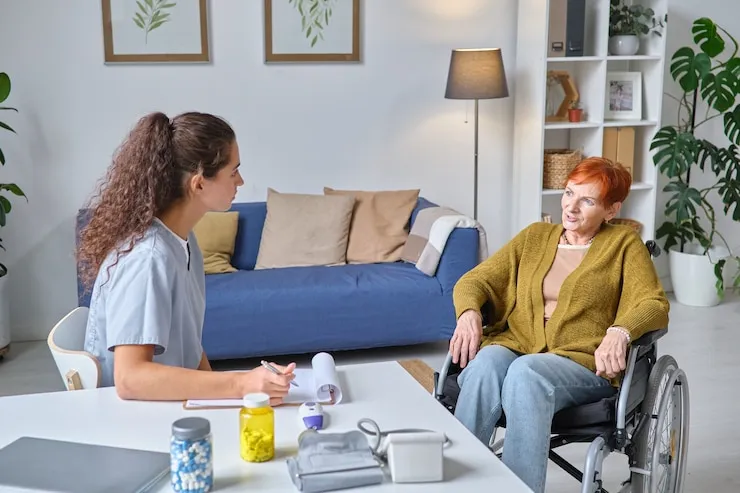
Introduction
Clear communication plays an important role in every area of life—whether you’re speaking at work, interacting in social settings, or connecting with family. For many adults, challenges such as stuttering, articulation issues, weak vocal projection, or slurred speech can make daily communication feel overwhelming. Fortunately, speech therapy exercises for adults are effective tools that help strengthen the voice, improve fluency, and build confidence.
This guide highlights the most reliable exercises you can practice at home, explains why they work, and shows you how to make them a regular part of your daily routine. Whether you’re recovering from a stroke, managing a neurological condition, or simply aiming to speak more clearly, these exercises are easy to follow and supported by speech-language experts.
Why Speech Therapy Exercises for Adults Matter
Speech therapy isn’t limited to children; in fact, adults often benefit immensely when facing challenges such as:
Speech changes after stroke or brain injury
Stuttering or fluency issues
Vocal strain or fatigue
Accent modification needs
Communication difficulties caused by neurological conditions
Public speaking fears or confidence struggles
Regular practice helps retrain muscles, improve articulation, and develop stronger control over breathing and pacing—skills that directly impact clarity and fluency.
Key Benefits of Speech Therapy Exercises for Adults
1. Improved Articulation
Targeted exercises strengthen the tongue, lips, and jaw, making it easier to pronounce sounds accurately.
2. Better Fluency
Breathing and pacing techniques help reduce stuttering and encourage smoother speech.
3. Stronger Voice
Vocal training improves projection, reduces strain, and supports consistent vocal quality.
4. Increased Confidence
As speech becomes clearer and more controlled, everyday conversations feel more relaxed and natural.
5. Easy at-Home Practice
Most exercises require no equipment and can be done anywhere, making them accessible and convenient.
Effective Speech Therapy Exercises for Adults
Below are simple yet powerful exercises recommended by speech-language pathologists.
Breathing and Voice Control
Diaphragmatic Breathing
- Sit upright with one hand on your stomach.
Inhale deeply through your nose and allow your stomach to rise.
Exhale slowly while saying a long, steady sound such as “ahhhh.”
Repeat 5–10 times.
This exercise builds breath support, which is essential for clear speech and strong vocal projection.
Sustained Phonation
Hold a vowel sound (“a,” “e,” “o,” or “u”) for as long as you comfortably can.
Try to extend your time a little each day.
This helps improve vocal endurance and volume control.
Articulation Exercises
Tongue Twisters
Start slowly with phrases like:
“She sells seashells by the seashore.”
Focus on clarity first, then gradually increase speed.
Over-Articulation Practice
Exaggerate mouth movements as you say words like “banana” or “yesterday.”
This improves precision and muscle coordination.
Consonant Repetition
Repeat challenging sounds such as r, s, l, th in short sentences.
Example: “The red rabbit ran rapidly.”
Fluency and Pacing Techniques
Slow Speech Practice
Read sentences aloud while running a finger under each word.
This slows your pace naturally and supports smooth, rhythmic speech.
Easy Onset
Start the first sound of a word gently rather than forcefully.
Example: Begin “sun” with a soft “ssss” sound before finishing the word.
This reduces tension that often leads to stuttering.
Oral Motor Strengthening
Lip Trills
Blow air through closed lips until they vibrate.
This improves airflow and strengthens lip muscles.
Cheek Puff Exercise
Fill your cheeks with air and hold for 5–10 seconds.
Release gently and repeat several times.
Tongue Push
Press your tongue firmly against the inside of your cheek.
Hold for 5 seconds, then switch sides.
This builds strength and control for clearer articulation.
Social Communication Practice
Role-Playing
Practice everyday scenarios, such as ordering food or making a phone call.
Mirror Speaking
Watch your mouth movements and facial expressions while speaking.
This reinforces accurate articulation and improves confidence.
Recording Exercises
Record yourself reading aloud and listen for clarity, pacing, and volume.
It’s one of the fastest ways to identify improvement areas.
How to Add Speech Therapy Exercises to Your Daily Routine
- Morning: Start with breathing and articulation warm-ups.
Mid-day: Practice tongue twisters, pacing, or oral motor drills during short breaks.
Evening: Record a brief reflection or story to track progress.
Throughout the day: Use fluency techniques during real conversations.
Consistency matters more than duration. Just 15–20 minutes per day can create meaningful change.
Helpful Tools and Resources for At-Home Practice
- Apps: Constant Therapy, Tactus Therapy, Lingraphica
Videos: SLP-guided practice sessions on YouTube
Workbooks: Printable articulation or fluency worksheets
Professional Support: Online or in-clinic sessions with licensed SLPs
To connect with a qualified therapist, use the ASHA (American Speech-Language-Hearing Association) directory.
Challenges Adults Face in Speech Therapy
- Frustration: Improvement can feel slow—small gains count.
Consistency: Creating a daily schedule helps maintain progress.
Motivation: Support groups, coaches, or an SLP can help keep you motivated.
Who Benefits Most from Speech Therapy Exercises for Adults?
- Stroke survivors rebuilding speech
Adults with stuttering or fluency challenges
Professionals who need stronger communication for work
Teachers, singers, and public speakers with vocal strain
Adults seeking accent clarity
Individuals with neurological conditions affecting speech
FAQs
1. Can adults really improve their speech through exercises?
Yes. The brain’s neuroplasticity allows adults to learn, adapt, and strengthen speech skills at any age.
2. How long does it take to see improvements?
Many adults notice progress within 4–8 weeks of consistent practice.
3. Do I need a speech therapist?
While many exercises can be done alone, an SLP ensures you’re practicing safely and effectively.
4. Can these exercises help with stuttering?
Yes. Techniques like slow pacing and easy onset are commonly used in fluency therapy.
5. How often should I practice?
Short, daily sessions are more effective than long, infrequent ones.
Final Thoughts
Speech therapy exercises for adults offer a practical and effective way to rebuild or enhance communication skills. Whether you’re working on articulation, fluency, or voice strength, the right exercises combined with consistent practice can make a significant difference. Partnering with a licensed speech-language pathologist can boost your progress even further.
Call to Action
Ready to improve your communication skills?
👉 Start practicing the speech therapy exercises for adults listed in this guide or connect with a licensed SLP for personalized support.
With steady effort, you can speak more clearly, confidently, and fluently—opening new doors in both personal and professional life.


